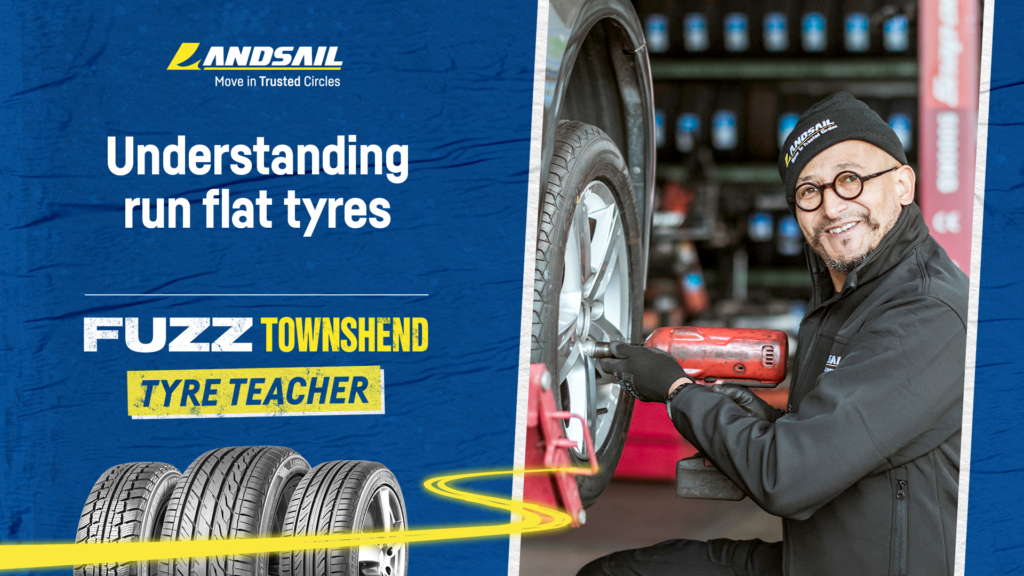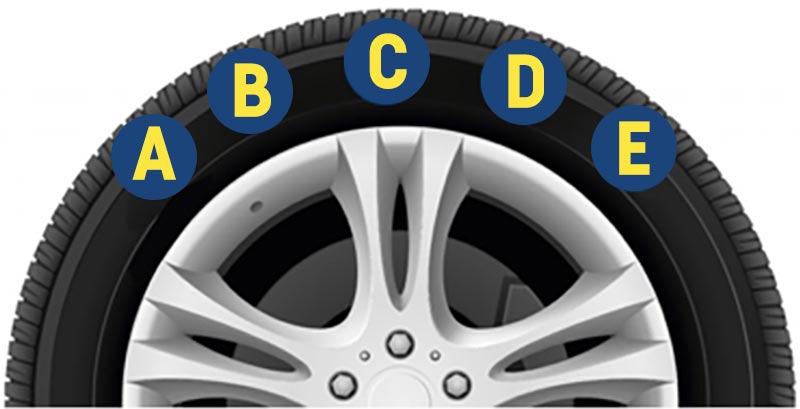
Tyre Teacher | Understanding run flat tyres
Fuzz Townshend Tyre TeacherRealising that your car has a punctured tyre can be a frightening moment if you are driving at the time. A myriad of questions race through the mind; What should I do? Should I stop the car immediately? What will happen if I continue? Is the car about to crash?…
These fears may be assuaged by fitting a set of Landsail ‘Run Flat’ tyres.
Landsail ‘Run Flat’ tyres feature strengthened sidewalls that allow the tyres to continue to be driven on when deflated, so that the driver can guide the car to a place of greater safety in a controlled manner, without wrecking the road or wheel.
If your car suffers a puncture while driving, bring the car to a controlled halt, switch on its hazard warning lights and, if safe to do so, get you and any passengers to a place of safety away from the car and the roadside.
Puncture detection equipment
Modern cars often feature tyre pressure sensing equipment which should give the driver a warning that a puncture has occurred. This generally is a useful offshoot of the antilock braking system (ABS) equipment. The same sensors that detect whether a wheel has ceased turning, as is often the case in a skid situation, are used to detect differences in the rotational speeds of the car’s wheels.

Why is this useful?
Wheel rotational speed data is useful because when a car’s tyres are all correctly inflated, the wheels on each axle can be expected to rotate at similar rates with the vehicle proceeding in a straight line, as the tyres’ radii are relatively similar. When a puncture occurs, the radius of the deflated tyre is effectively reduced, with the result that it will have to rotate faster to keep up with the inflated tyre. The sensors detect this and relay the information to the car’s electronic control unit (ECU), the computer in charge of running the car’s many interworking systems, which in turn alerts the driver via a dashboard warning display. Only cars with tyre pressure monitoring systems should be fitted with run flat tyres. Without such a system, the detection of a puncture can be difficult. Punctured flat tyres should not be driven on for more than 50 miles, or at more than 50mph.
Cars fitted with run flat tyres as original equipment are unlikely to carry a spare wheel or emergency tyre inflation foam. If you have bought a used car that should have run flat tyres fitted, check if that is the case and ensure that you carry an inflation kit or spare wheel if not, otherwise, you might find yourself in a compromised and dangerous situation when a puncture occurs.
This is all very well on vehicles so equipped, but on a vehicle without puncture detection systems, there are other ways that the drivers of all cars can detect when a puncture has occurred. Read on to find out how…
Change in sound
When a tyre deflates its sound characteristics alter. Generally speaking the volume of noise the tyre makes when in rotational contact with the road will increase if it has suffered a puncture. This increase might only be subtle within a well-insulated car, but any unexpected change in the sonic emissions of your car should be investigated immediately.
Steering pull
The effective change in the radius of a punctured tyre on a steered axle may lead to a pronounced ‘pull’ on the steering toward the puncture, meaning that the driver will feel the need to compensate by turning the steering wheel off centre. A slow puncture might mean the onset of this pull is slow and subtle. If this occurs, stop in a safe place and investigate immediately.

Vibration
One of the most obvious clues to a tyre deflation is vibration. In this case it may be a passenger who senses this first, meaning that back seat drivers aren’t always a bad thing. If this happens to your car, proceed to a safe place if the car is fit to do so and investigate.
In every case, fitting a set of Landsail ‘Run Flat’ tyres offers a greater chance of you guiding your car and its passengers to a place of safety. It’s a ‘no brainer’! Don’t forget to get your tyres fitted at an approved Landsail dealer.
Check out Landsail’s Run Flat product range below:
LS588 RSC – https://landsailtyres.co.uk/tyre/ls588-rsc/
LS388 RSC – https://landsailtyres.co.uk/tyre/ls388-rsc/





